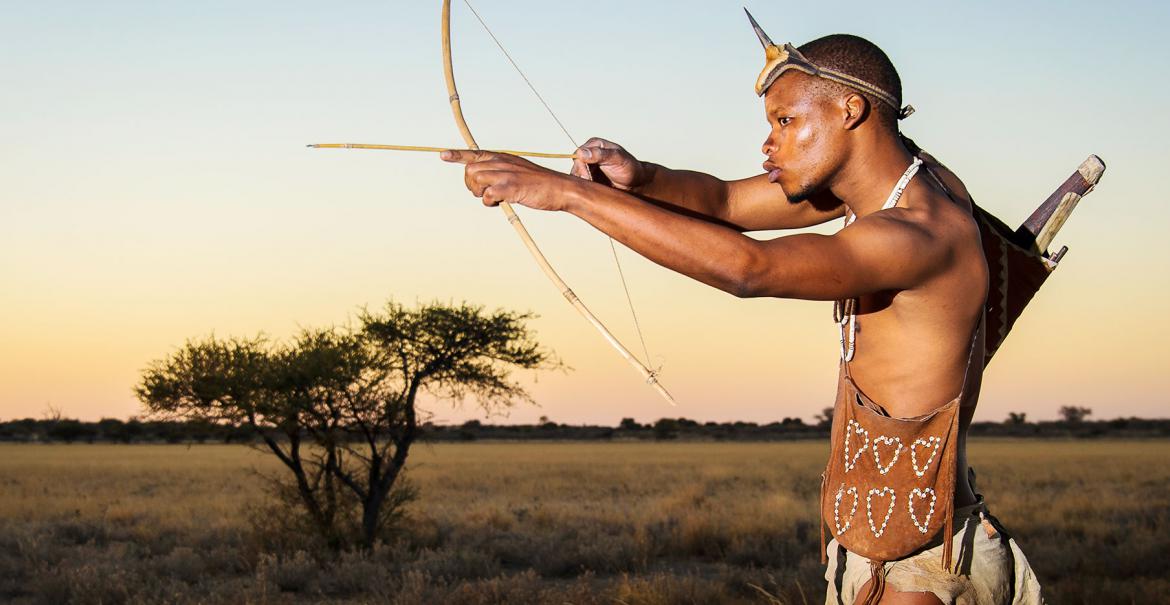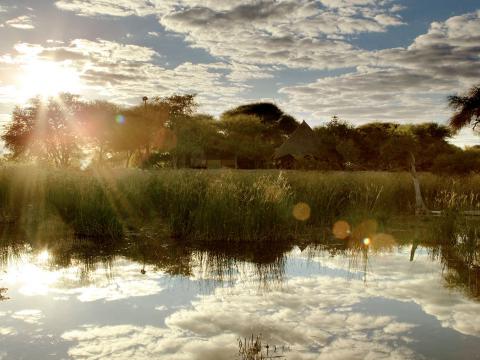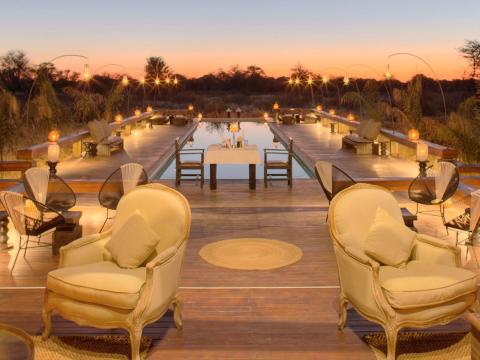Kalahari Desert

Botswana is almost 70% covered by Kalahari sand. The Kalahari Desert is not really a desert, because there is much vegetation and abundant, but unpredictable rainfall. The ground, however, holds no water on the surface, leading to a fascinating ecological 'challenge' in creating flora, fauna and for the Bushmen who have already lived in this area for thousands of years.
The name Kalahari comes from the Tswana word, "Kgalagadi," meaning, "the great thirst," and it is one of the world's largest sandy areas that stretches from South Africa in the south to Namibia in the west, and Angola and Zambia to the north.
The Kalahari is home to three of Africa's most remote game reserves: the Central Kalahari Game Reserve (CKGR), Khutse Game Reserve and the Gemsbok National Park.
Central Kalahari Game Reserve
This spectacular sandy sanctuary was founded in 1961. Surprisingly, the reserve was not established to protect any endangered animal species, but an endangered human species, the San Bushmen. The reserve was intended to create a home for the Bushmen in their natural environment, the only place where they were able to survive. This unusual reserve is the second largest piece of desert country in the world and is therefore, twice as precious. There are four fossil rivers that meander through the dry reserve, among them is the dusty old waterway, that 16,000 years ago, sought a way through the northern Kalahari and now is known under the name, Deception Valley - a great safari area.
A variety of grasses, acacias, thorn forests and other plants that can live in this dry area, covers most of the Central Kalahari Game Reserve. Tsamma melons and gemsbok cucumbers are the main source of water for the animals and the Bushmen in the dry season.
Khutse Game Reserve
The 2,500 km² Khutse Game Reserve was opened in 1971, on a Bakwena tribe area. There lived very few people before the opening, by an almost complete lack of surface water and the fragile vegetation in this dry area of Kalahari savannah woodland. Those who lived there kept themselves alive with natural products, they hardly hunted and held only a small livestock. Wildlife was therefore considered as a good alternative for the use of the land.
The extensive mineralized pan in Khutse formed an important habitat for herbivores that graze on the pans, they drink mineral water in the rainy season and in the dry season they lick up the salt. These herbivores in turn attract predators such as, lions, cheetahs and leopards.
At some places in the reserves, there are waterholes dug in order to keep the animals in the area throughout the year. Although the visitors to Khutse must not expect to encounter large concentrations of wildlife, giraffes, gemsbok, red hartebeest, eland, kudu, wildebeest, springbok, mountain goats, gray duikers, lions, leopards, cheetahs, brown hyenas, black-backed jackals and wildlife in Khutse can be spotted.
A large variety of birds, ostriches and the kori buzzard and the smaller species keep the enthusiastic spotter busy.
Kalahari Gemsbok National Park
The Kalahari Gemsbok National Park is located between the borders of Namibia and Botswana. The park covers an area of less than 10,000 km². The Kalahari Gemsbok National Park and the adjacent Gemsbok National Park together cover no less than 36,000 km². Since there is no fence separating the two parks, the animals can freely migrate from one park to another.
There are kilometres of rolling rust-red sand dunes, solitary trees and some types of grass here and there. For the enthusiasts of the rugged, untamed Africa, this particular beautiful region has a unique attraction. The Kalahari Desert is part of the largest continuous sand area in the world. The new 38,000 km ² park, known as the Kgalagadi ('land of thirst'), represents an increasingly rare phenomenon: it is a vast ecosystem that has remained virtually spared from human influences.
The ultimate safari experience is to see thousands of antelope galloping on the sands. Roads run along the dry riverbeds of the Nossob and Auob rivers and the relative barren area offers excellent opportunities for wildlife observation and photography.
The Kalahari Gemsbok National Park is also one of the best areas in southern Africa to see predatory birds. In the heat of the day black mane Kalahari lions shelter under shady bushes and leopards are retreating on the branches of trees, while visitors can cool off in the pool at the Two Rivers camp or enjoy a cool drink in the restaurant.






